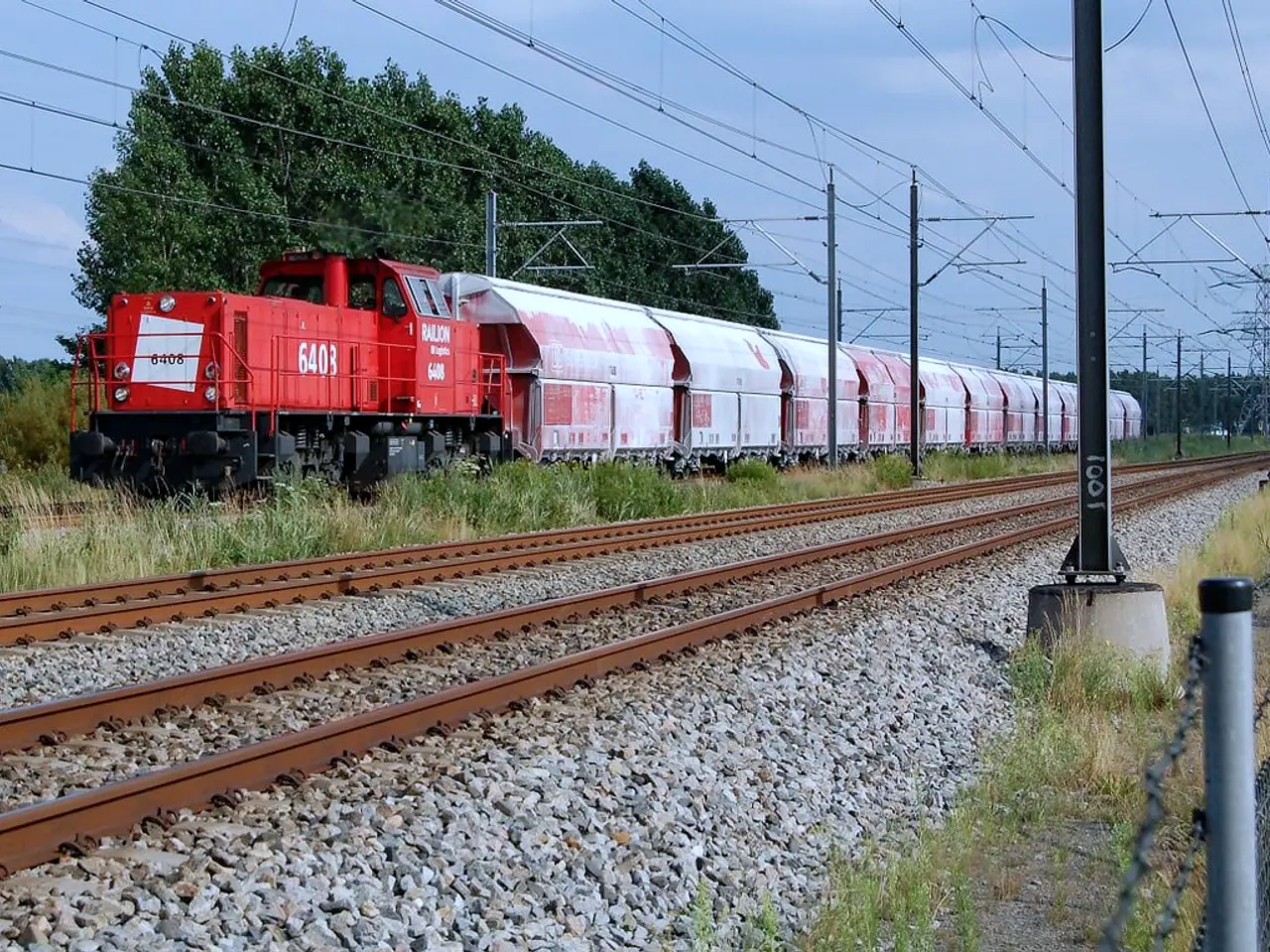Cryptocurrency Platforms Experience Minimal Selling Demand Despite Rising Prices: CryptoQuant Analysis
In recent weeks, a surge in prices for major cryptocurrencies has been observed, yet investors have demonstrated a remarkable reluctance to cash in on their gains. This trend is evident in the declining inflow and deposit rates recorded by crypto exchanges.
According to a report by CryptoQuant, Bitcoin (BTC), Ether (ETH), and Ripple's XRP are experiencing a sharp decrease in inflows and deposits as prices approach all-time highs (ATHs). This decline suggests that investors are more inclined to hold onto their assets rather than sell them.
Reduced Selling Pressure
On May 22, BTC hit an ATH of $111,861. Compare this to November 2024 when BTC surged close to and surpassed $100,000, daily bitcoin inflows to exchanges were 121,000. However, in the current rally, daily bitcoin inflows to exchanges have dropped dramatically to approximately 22,000 BTC.
A higher flow of assets into exchanges usually indicates increased selling pressure. Conversely, the decline in inflows indicates a reduced intent to sell among investors. Furthermore, the number of individual deposits to trading platforms has plummeted from 98,000 in November to just 29,000 as of now, showing that fewer investors are selling despite the price rally.
ETH is also witnessing low inflows to exchanges. The number of coins moving into these trading venues on a daily basis has fallen by 70% from 3.2 million ETH in November to about 1 million ETH at present. Individual daily deposits have dropped from a recent peak of 135,000 ETH in early April to 15,000 today.
Similarly, XRP exchange inflows have decreased, particularly since the coin's founding company, Ripple, settled its legal battle with the United States Securities and Exchange Commission. Daily XRP deposits have plunged from 4 billion in late March to 46 million, while deposits have also dwindled 99.5% from 2.1 million in December to 9,000 today.
The decline in BTC, ETH, and XRP deposits indicates improving investor sentiment.
Stablecoin Reserves Surge
Although ETH and XRP have not reached new ATHs recently, they have recorded significant growth. Data from CoinMarketCap shows that both assets are up 55% and 11% monthly.
While the broader crypto market continues to display positive momentum, the inflow of Tether (USDT) into exchanges has continued to soar. The total USDT reserves on exchanges have now reached an all-time high of $46.9 billion.
"The growth in stablecoin balances signals increasing market liquidity, which typically supports digital asset prices," stated CryptoQuant.
Institutional Activity Boosts Crypto Markets
Despite ongoing price volatility, both BTC and ETH have seen robust inflows into digital asset investment products and ETFs. In a recent week, BTC dominated inflows with $2.9 billion, and ETH saw $326 million, marking its strongest inflow in 15 weeks and its fifth consecutive week of positive sentiment. The surge in institutional interest is partly driven by rising economic uncertainty in the U.S., including credit downgrades and higher treasury yields, prompting investors to diversify into digital assets.
On the other hand, XRP is experiencing historic outflows, with total outflows amounting to $37.2 million—its highest on record—ending an unprecedented 80-week streak of inflows. This decrease in inflows indicates a shift in investor sentiment specifically against XRP.
Some price predictions and analysts note early signs of exhaustion among BTC, ETH, and XRP. This may lead to fewer new deposits and lower trading volumes, as traders may be more cautious after significant price rallies or may be taking profits rather than depositing additional funds into exchanges.
Reasons for Low Exchange Deposits
- Institutional vs. Retail Behavior: The strong inflows into ETFs and institutional investment products do not always translate to increased deposits or inflows onto centralized exchanges, as institutions often use ETFs and over-the-counter (OTC) channels, reducing the need for direct exchange deposits.
- Profit-Taking and Asset Retention: After price surges, many holders may choose to secure gains by selling, but also by withdrawing funds from exchanges to self-custody, especially in a climate of perceived high prices or overbought conditions—this can reduce exchange balances even as prices climb.
- Regulatory and Security Concerns: Ongoing regulatory uncertainty and negative news, such as exchange breaches or enforcement actions, may reduce confidence in keeping assets on exchanges, further lowering inflows and deposits.
- Differentiated Trends by Asset: While BTC and ETH are benefiting from bullish sentiment and ETF inflows, XRP’s outflows suggest a unique set of challenges or negative catalysts specific to its ecosystem or regulatory standing.
Conclusion
While certain cryptocurrencies are experiencing low exchange deposits during price surges, this trend is not indicative of a lack of demand across the board. The decline in inflows and deposits can be attributed to several factors, including profit-taking, increased self-custody, institutional use of alternative channels, and regulatory or security concerns. The surge in institutional interest, especially in BTC and ETH, demonstrates the growing appeal of digital assets as a diversification strategy in uncertain economic conditions.
- The low inflows and deposits of Bitcoin (BTC), Ethereum (ETH), and Ripple's XRP into crypto exchanges suggest that investors are more inclined to hold onto their assets rather than sell them, as reported by CryptoQuant.
- The decrease in BTC, ETH, and XRP deposits indicates improving investor sentiment, despite their recent price surges.
- The growth in stablecoin balances, such as Tether (USDT), supports digital asset prices as it signifies increasing market liquidity, according to CryptoQuant.
- Institutional investment plays a significant role in boosting crypto markets, with both Bitcoin (BTC) and Ethereum (ETH) seeing robust inflows into digital asset investment products and ETFs, while XRP is experiencing historic outflows.




